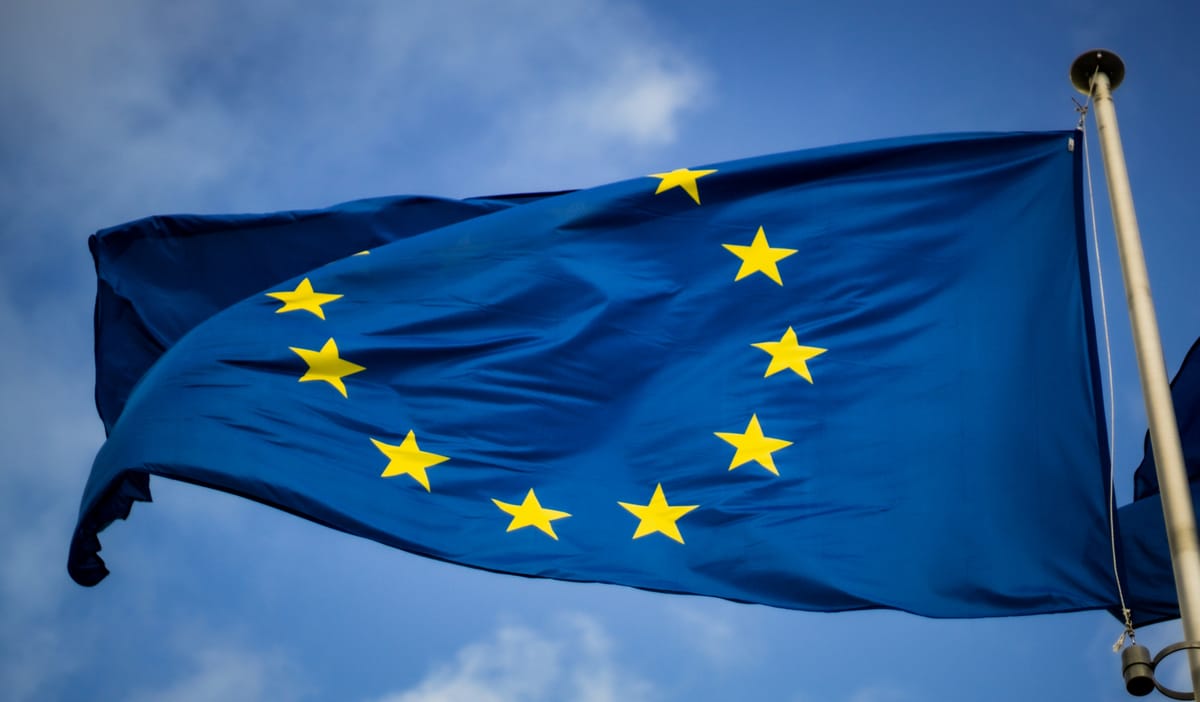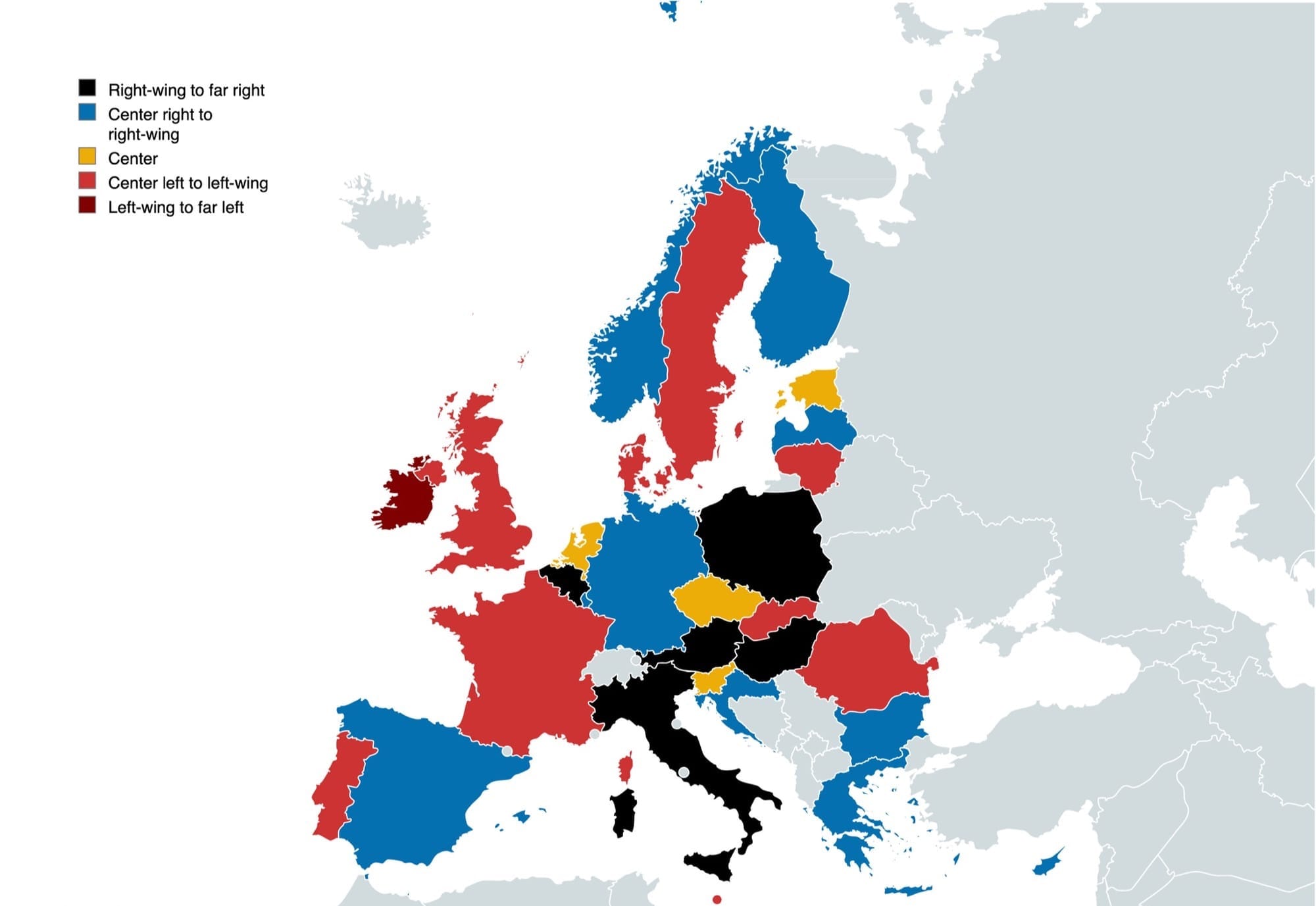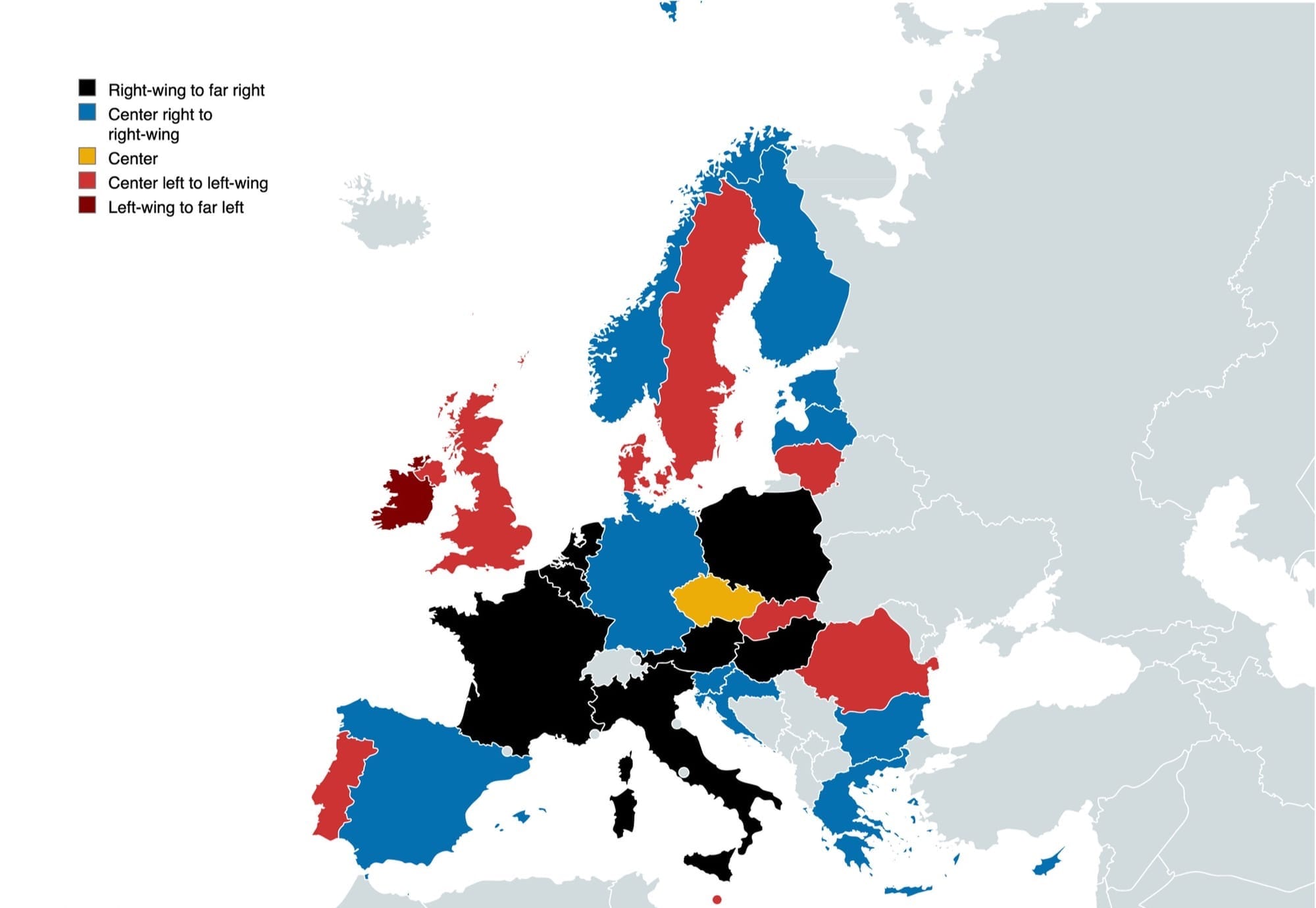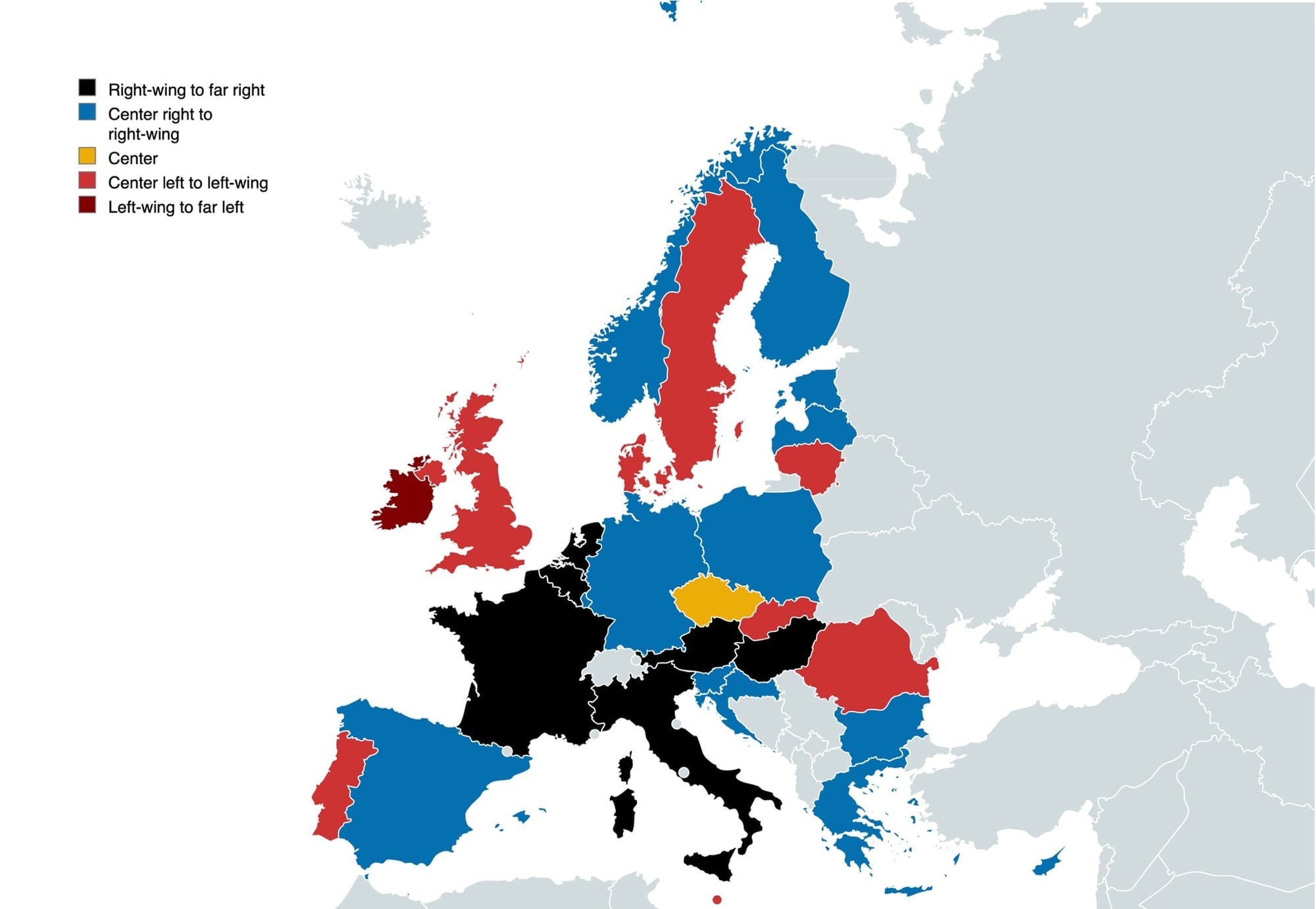Numbers Don't Lie: Europe's Move to the Right

1 year ago marked the first bitter anniversary of the Russo-Ukraine war. The continent was stabilising in unstable times, or at leats growing more accustomed. Support remained strong for the Ukrainian cause, however, future support hinged on the spring offensive we now know did not go as well as hoped. Support for Ukraine has dropped in many nations and the belief that Russia will lose this war is very minimal. How is this effecting the politics of Europe? This article examines the state of Europe in comparison to the past.
As a benchmark the largest parties within each respective nation are shown, the largest political party can say a lot about the state of a country. What is prioritised and what is not. The map below showcases the largest political party in most European countries. Ideologies are classified through EU party affiliation or what the consensus agrees upon.

The map reflects Europe well. Popular establishment parties dominate their home countries; Poland, Ireland and Greece. Waning support for governing parties is reflected in countries such as the United Kingdom, Norway and France. Whilst some nations are more evenly divided such as Portugal. The right-wing to far right have long been more sceptical of a Ukraine win alongside the populations of Poland and Hungry which explains the strength of PiS and Fidez at the time. Italy can be explained by a calming political climate, popular among a people tired of chaos. Giorgia Meloni had managed to bring stability and so solidified her party's position as the most popular. The liberal nations, except the Czech Republic, all had relatively popular governing parties reflected in the map. Czechia on the other hand had a popular opposition, ANO. The UK, France and Germany all share that the governing party or parties were highly unpopular. The Balkan nations and Cyprus settled with their largest parties.
Looking at how many nations each category has under its umbrella it becomes apparent that traditional left and right parties remained well liked. Center right to right-wing had 10 and center left to left-wing had 9 countries. The right-wing to far right parties maintained a strong portfolio of 5 countries. Centerists had 4 and Ireland was the only to be categorised as left-wing to far left. The map below showcases the same information as the last, however, with data from last month.

This map is undeniably different the right-wing to far right have drastically strengthened their standing at the expense of the center. Just looking at the numbers there are 12 (+2) blue nations, 8 (-1) red, 7 (+2) black alongside 1 for yellow (-3) and dark red (-). The right had a good year to put it mildly. Major ground was taken by both and the weak results for the center and left showcases changes in Europe. Workers movements, liberal ideals and social democrats seem to be on the retreat. Losing strongholds such as France, the Netherlands and Estonia. The dynamics of Europe changed both in terms of new conditions and furthermore politically. The map below showcases this month.

Unsurprisingly 1 month does not see the world radically change, politically at least. The only noticeable difference is Poland, which for the first time since late spring of 2015 sees another category than the right-wing to far right hold the nation. Donald Tusk's return from Brussels followed by Civic Coalition's victory in the country's general election with the subsequent different national leadership seems to have resonated deeply with voters. PiS once polled in the high 30s has now plummeted to 30% whilst Mr Tusk continues to gain headway in Poland. This change is important, a vital piece of the right-wing to far right has fallen, showcasing that the right-wing to far right can be defeated something that until now was unproven. This conversion is likely to be followed by Austria that has seen wavering support for the FVP. Both France and the Netherlands have seen the far right solidify their lead. Dutch PVV is polling the best any party has ever done in the nations since Politico started taking polling. The NR has slowly increased its grip on France and seems likely to continue. Portugal's political scene has closeted with the left just barely winning the nation. The remaining unpopularity of the German, British and Norwegian governments continue to favour the main opposition. However, scandals concerning Erna Solberg in Norway have weakened Høyer, a center right party. Slovenia's electorate seem to have lost faith in its newcomer party returning back to the SDS.
Europe's is changing, not surprising, and its commitment to Ukraine remains strong, however, public confidence for Ukraine's war efforts remains indisputably low. The continuing support for parties that support Ukraine perhaps show a strong sense of duty toward giving the Ukrainians the tools to fight even if one does not believe they will win. Or perhaps more likely that voters simply do not prioritise the subject enough for it to be defining. February reflects a strengthened center right to right-wing and a major shift since last year at the same time.



